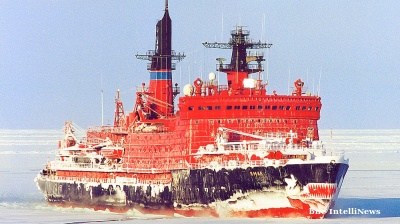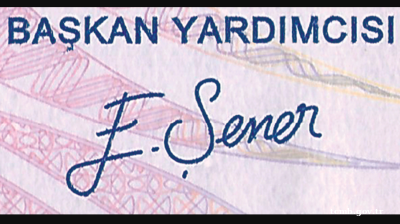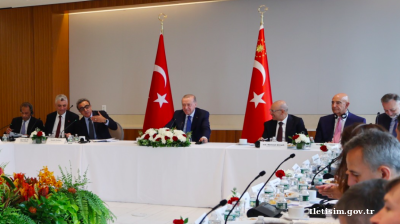Fethullah Gulen, born in 1941 in Turkey’s Erzurum Province in eastern Anatolia, died on Sunday October 20, 2024, in the US state of Pennsylvania.
A Turkish preacher and cleric to the mainstream media, he was to his former ally Recep Tayyip Erdogan, the leader of a terrorist organisation dubbed the Fethullahist Terrorist Organisation (FETO), while to some “primates” on the Middle East, whose brains work through “conspiracy theories”, he headed up an Operation Gladio apparatus.
When going through the facts laid out below, you can test how much of a fresh mind, how much of an Erdoganist and how much of a primate on the Middle East you are.

Screenshot: Watch out what you wish for.
Erzurum
If we are up to understanding the Gulen phenomenon (that had a good or bad and big or small influence in Turkey’s last half century), rather than waste our time with a mainstream obituary, which would lead us to conclude that Turkey is “a complicated story”, we should perhaps gain some idea of what Erzurum is all about.
Erzurum is the biggest city in the mountainous region of Eastern Anatolia, a stronghold that was the undoing of the Russians during the 1877-78 War and the Eastern Front bastion that pushed back the Armenians during World War I.
Erzurum has also served as a stronghold of the post-1915 official ideology of the Turkish state.
“Post-1915” here obviously refers to the beginning of the controversial policies on the Armenians as well as the beginning of the radical Turkification policies that aimed to create a nation from the population that was left following the collapse of the Ottoman Empire.
Baris Unlu, an academic, perfectly summarises the ideology in question with a term he coined: “The Turkishness Contract”.
In short, if you’d rather avoid being targeted by the Turkish state, you are supposed to define yourself as a “Sunni Turk”, while categorically denying the claim that there was an Armenian Genocide and staunchly rejecting any political demands made by Kurds.
Those interested in the development of the ideology in question can take a look at the book entitled “The Nation in Arms”. The author of the book was Goltz Pasha, a Prussian field marshal who trained Ottoman officers between 1883 and 1895.
Said-i Kurdi or Nursi?
Gulen, an Islamic scholar, was a follower of the Nur movement. The name Nur (Divine light) derives from the title of the writings of a modernist Islamic scholar, Sait Okur.
Okur’s writings are referred to as Risale-i Nur (Epistles of Light). He calls himself Said-i Kurdi, referring to his ethnicity. The name Said-i Nursi serves the objective of avoiding the Kurdish allergy in the country.
Okur died in 1960 when Gulen was 29 years-old.
“I question myself as to whether I never visited Nursi just because he was a Kurd” is a quote attributed to Gulen.
Cold War
In 1947, Ismet Pasha (the “second man”, the successor to the Turkish Republic’s founding father Mustafa Kemal Ataturk), who was afraid of threats made by Stalin, accepted the US mandate with the Truman Doctrine.
In 1948, a first batch of young officers, which included Alpaslan Turkes (founder of the Nationalist Movement Party, or MHP), were sent to the US to receive “counter-guerrilla” training.
What the Yanks discovered in Turkey was to them like some kind of “Black Friday” shopping fest: Here was a totalitarian state located right next to the Soviets with an ideology that already had anti-Russian and anti-communist seasoning.
Today, love of Turkey is still widespread at the Pentagon.
In 1950, the Komunizmle Mucadele Dernegi (Association for Fighting against Communism) was launched. In 1952, Turkey joined Nato.
In 1963, Gulen participated in the opening of the Erzurum branch of the anti-Communist association. He also served on a branch managerial board.
Komunizmle Mucadele Dernegi and its offshoots have raised almost all of Turkey’s political elites.
Izmir
Following an Islamic education, Gulen served as an official imam of the Turkish state at several mosques in different cities.
In 1966, he was appointed to the Kestanepazari Mosque in Izmir on Turkey’s Aegean coast.
In Izmir, he started building up his movement that would go on to be called the Gulen Movement, the Gulenists, the Fethullahists, the Hizmet (the Service) of the Cemaat (Community) and, finally, FETO.
The organisational structure of the Gulenist community, an international entity present around the world, though you might not know it, reminds one of the US-based cult, The Family.
When you ask them who they are, they are not even a religious community, they are just a group of friends. However, they manage billions of dollars in the global economy. They are everywhere. They serve in high-level posts in critical government departments. They are present in parliamanets via various parties. They even have their own foreign policy. And, so on.
There is not a single Gulenist that defines himself as a Gulenist.
In 2010, Reva Bhalla of Stratfor chased up the puzzle of how to identify a Gulenist. Thanks to Wikileaks, we have her findings.
According to Bhalla, a Gulenist could have a wife without a headscarf. He could drink whiskey. He could meet with Russian prostitutes. And, so on.
Bhalla suggested that the Gulenists did not refer to Gulen as Gulen but as “hodja efendi” (“respected teacher”). They did not take the batteries out of their phones during meetings to avoid tracing and bugging (see “The dictator” section below. It is 2010. The Gulenists are the gods of the time).
They wore no gold rings and they liked talking about the cosmos and space, Bhalla also observed.
Smartest kids in Turkey
Gulen laid the foundations of his movement among small merchants. The movement began to boom with the launch of private teaching institutions during the 1970s, funded with money collected from these merchants.
Children in Turkey take central exams after graduating from the primary, elementary and high school levels. Those who are scored above a certain level can apply to the better elementary or high schools and universities.
The private teaching institutions were an industry that used to prepare children for these exams. Gulen was not the only player in the industry, but he became the dominant player in the 90s.
From the 1980s through to 2015, when Erdogan shut down all the private teaching institutions in the country to deliver a blow to Gulen in their “war”, the Gulenist movement acquired a huge proportion of Turkey’s most successful children, namely the ones with the top marks in the central exams.
Global giant
During the 1990s, Gulen’s movement morphed into a global giant. The Broader Middle East and North Africa Initiative and Moderate Islam were the zeitgeist of the decade.

Photo: In addition to Papa II. Ioannes Paulus, Gulen during the 90s posed with Alparslan Turkes (founder of Turkey's Nationalist Movement Party, or MHP), Bulent Ecevit (the late PM and chair of the country's Republican People’s Party, or CHP), the late PM Mesut Yilmaz, the then Istanbul mayor Erdogan, the late President Suleyman Demirel, the ex-PM Tansu Ciller, the late President Turgut Ozal and Morton Abramowitz (former US ambassador to Ankara).
February 28, 1997, first slap in the face
The February 28 post-modern military coup in 1997 was the first slap in the face for the Gulen movement.
On March 21, 1999, Gulen moved to the US. A coincidence – it was just two weeks after the CIA handed over Kurdistan Workers’ Party (PKK) leader Abdullah Ocallan to Turkish intelligence service (MIT) agents in Kenya.
Author and former CIA officer Graham E. Fuller, a man who could be described as the godfather of the project that gave rise to Erdogan’s Justice and Development Party (AKP), his colleague George Fides and Morton Abramowitz, a former US ambassador to Ankara, were among those who provided Gulen with references when he applied to the US for a “global talent” visa.
The government

Screenshot: An important method in the business of manipulation: ‘Blame others for what you do’.
In 2001, the Gulenists were among the founding stakeholders of the AKP. In 2002, they became the government.
The movement had well-educated human sources and resources placed in all departments of the Turkish state. The AKP had to rely on them in its initial years.

Screenshot: Exaggerate responsibly.
The dictator
In 2007, Gulenist prosecutors, judges and police officers launched the Ergenekon trials. The Ergenekon was an imaginary organisation that was created to take down the military tutelage regime in Turkey.
It should be noted that the tutelage regime was not anti-Americanist. All of its top players were Nato soldiers or civilians shaped by Cold War institutions.
There is not a single Turkish soldier, including the loudest “Eurasianists” and “Kemalists”, who accepts the idea that Turkey should leave Nato.
The problem is that they dragged their heels when it came to directly participating in the first and second wars launched by the West in Iraq.
It does not take Einstein to fathom the reason. What happened in Turkey after the genius Erdogan regime became a participant in the Syria War is obvious to everyone.
The last-minute rejection of a resolution by the Turkish parliament just prior to the launch of the invasion in Iraq in 2003 was a particularly dramatic event.
The Americans were all set on aircraft carriers in the Mediterranean and had to change their invasion plans after the rejection of the resolution. It is referred to as the “March 1 (2003) Resolution Crisis”.
On March 19, 2003, Erdogan managed to win an approval for a more limited resolution.
However, the March 1 crisis was already the final straw for the US.
In July 2003, American forces captured some Turkish soldiers operating in northern Iraq. Photos then appeared in which the soldiers had hoods coveering their heads. The incident is known as the “Hood Incident”.
Gulenist police, prosecutors, judges as well as journalists conducted the Ergenekon operation.
The Gulenist police planted fake evidence in targets’ computers and then “leaked” details of their investigations to Gulenist journalists.
The journalists were used to prepare the public ahead of the Gulenist prosecutors demanding the detention of the suspects. The Gulenist judges subsequently issued orders for arrests and the suspects were jailed pending trials.
The September 12, 2010 referendum marked the peak of the Erdogan-Gulen partnership and the official end of the “military tutelage” regime in Turkey.
Erdogan, who defined himself as “the prosecutor of this case”, provided the required political support for the operation.
The period in Turkey between 2007 and 2011 could be described as under a Gulen dictatorship. During those years, anyone who mentioned Gulen publicly and made claims about his influence on the Turkish state was quickly detained.
The fight
Gulen had always seen Erdogan as ignorant and common. Mustafa Hos discusses in his book entitled “Big Boss” why it was that Erdogan was chosen to chair the AKP project.
In reference to former chief advisor to Erdogan, Nabi Avci, also a politician who served as the education minister between 2013 and 2016, Hos concludes that it was because Erdogan was a really good actor.
From a short script, Erdogan was able to fathom what was expected from him and improvise an impressive “show”.
His talent was so big that weaknesses in his character could be overlooked.
On January 29, 2009, during a session held at a Davos summit, Erdogan lost his temper and yelled at his Israeli counterpart Shimon Peres.
He was staking a claim to a new role in consoling the masses who get angry over the global silence that meets Israel’s murderous actions towards the Palestinians.
However, yelling at the Israeli PM before the cameras was a little bit too much for onlookers. It required a correction.
Please note that this does not mean that there was some kind of radical shift in the Erdogan regime’s foreign policy. It was simply about a weak character becoming spoilt when feeling secure thanks to his critical role in the game.
Writing “since coming to power in 2003, President Recep Tayyip Erdogan has gradually reinvented Turkey as a power in its own right that’s free to make new friends even if it upsets the old ones” is not simply ignorant, it is an open insult to the reader with their head screwed on. Even the mainstream media should not give space to such naïve and exaggerated simplicities.
Perhaps you remember the so-called big drama over how Erdogan blocked the Swedish and Finnish accession to Nato, but eventually gave way and they joined the transatlantic alliance? Or, have you already forgotten it?
Turkey’s apparent willingness to join BRICS is the same kind of headline generator. Though this is not even a military alliance. Perhaps Turkey could just become another trojan horse in there.
But, we digress. Back to 2009. After Erdogan started showing signs of hubris, some people, including Fuller, raised concerns suggesting that Turkey required a real opposition.
In May 2010, porn videos featuring a series of opposition politicians were released. Cevheri Guven, a fugitive Gulenist, was accused of offering the videos to local news portals for release.
In March 2010, media reports suggested that a member of the PKK was arrested in Belgium with a tape recording of some meetings in Oslo (they would later be called the “Oslo meetings”, the initial talks that would lead to Ankara’s so-called peace process with the PKK).
Prior to the June 2011 elections, Erdogan rejected the claims, saying: “Only inglorious and dishonest men would meet with terrorists.”
In September 2011, the tape recording in question was released on the internet. In the recording, Hakan Fidan, the former spymaster and current foreign minister who was an intelligence agent at that time, told the management of the PKK that he represented the then PM Erdogan at the meeting.
In February 2012, a Gulenist prosecutor summoned Fidan, then head of the national intelligence agency MIT. Erdogan was on the road to the hospital to have surgery. Fidan managed to catch him before he was put under for the operation. He ordered Fidan not to answer the summons.
The incident is called the “MIT Crisis” and it was the first public sign of the intra-regime fight. The prosecutor aimed to question Fidan over the Oslo talks and then to move on, or at least corner, Erdogan.
In March 2013, the biggest ever intelligence operation in Turkey known to the public was staged. A tape recording of then MIT chief Fidan, then foreign minister Ahmet Davutoglu and then deputy chief of the army, Yasar Guler, was released.
The trio were attempting to devise a reason to launch a direct military offensive in Syria and Fidan was offering to send his personnel to lob some rockets into Turkey from Syria.
During the week of December 17-25, 2013, the Gulenists crossed the rubicon by releasing tapes of phone calls among stakeholders in the regime as well as among members of the Erdogan family.
In January 2014, Gulenist police stopped two trucks loaded with guns that were on the road to Syria in the “MIT trucks incident”.
Defeated
The failed coup attempt in 2016 marked the end of the fight. Gulen had lost, Erdogan had won.
Today, there are thousands of Gulenists who are fugitives abroad. Thousands more are in prison in Turkey. They have been subjected to one of the most radical demonisation campaigns of the age.
So, now?

Tweet: Baris Pehlivan (@barispehlivan) is a journalist that spent some time in jail during the Ergenekon trials.

Tweet: Ferhat Unlu (@unluferhat) works for Sabah, a daily newspaper controlled by Erdogan’s son-in-law Berat Albayrak.
Features

Ambition, access and acceleration – Uzbekistan’s Startup Garage opens free academy for entrepreneurship
Aim is to train 50,000 young founders by 2030.

Ukraine’s growing energy crisis promises a cold and dark winter
Since the summer, Kyiv has changed tactics. Given the almost complete failure of Western oil sanctions to curb Russian oil exports, it has been targeting Russian oil refineries. The Kremlin has struck back, targeting Ukraine's power system.

Russia, China sign off on Northern Route shipping deal to slash global freight times
Russia and China have signed a landmark agreement to develop and commercialise the Northern Sea Route (NSR), after Beijing tested the route last month, that could slash Europe-Asia cargo transit times and challenge the primacy of the Suez Canal.

Sri Lanka’s economic escape
Sri Lanka’s recovery over the past year reads like a narrow escape rendered into a cautious, albeit unfinished success story.



